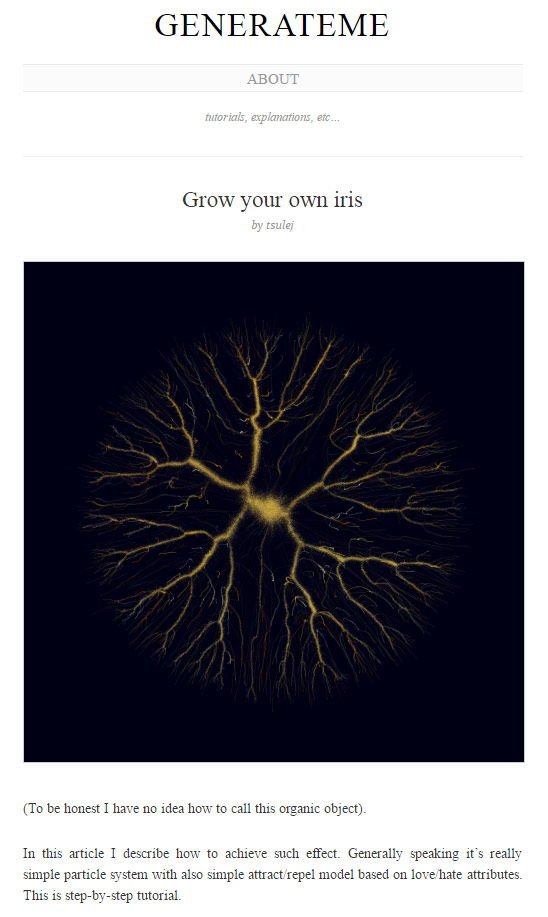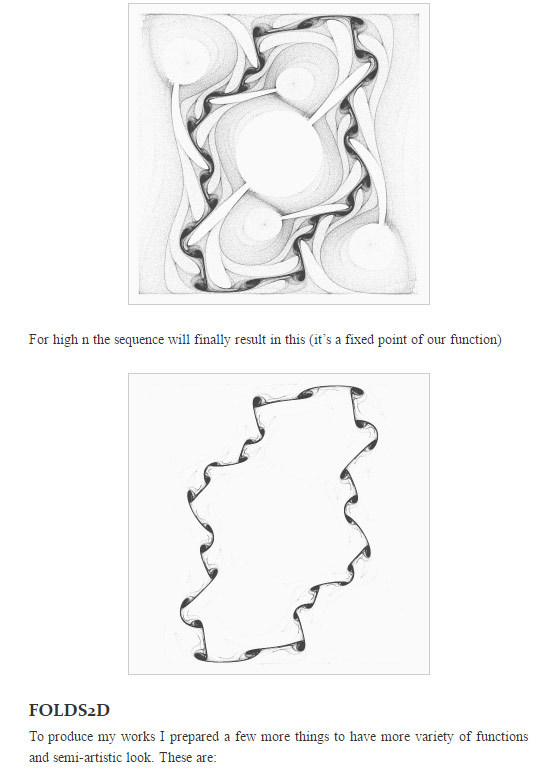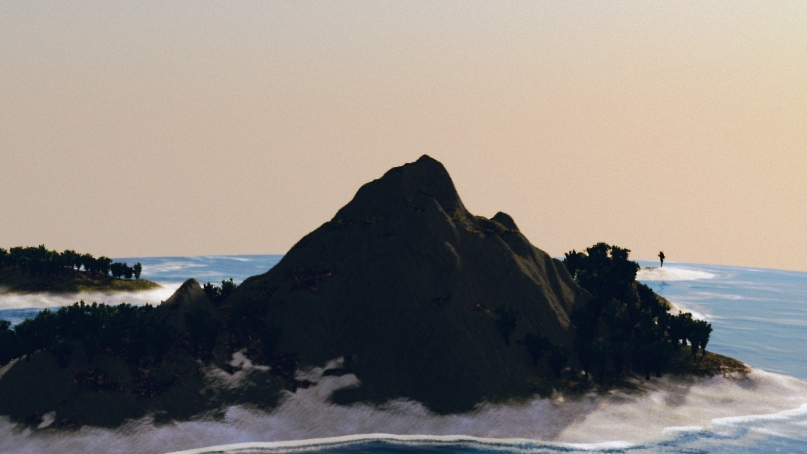

GenerateMe
I like it when people write detailed tutorials about their methods or work process. Breakdowns of specific techniques are very useful if you want to re-purpose them to your own ends, and when I read about the minutia of someone else’s process, I often take away some new ideas that they didn’t realize were different.
Which is why I was happy when I recently came across the GenerateMe blog and twitter feed.
Specifically this step-by-step description of what the author calls an “iris”; a weird little organic form generated via a particle system. It’s a great example of how the output of one odd process can be used as the input for a visualization. Plus it comes with the Processing code to implement it.
It also includes the formula…

…which is just delightful.
